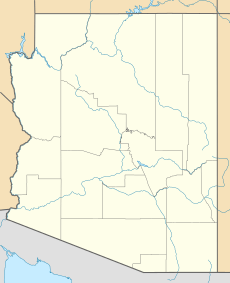Apollo Temple facts for kids
Quick facts for kids Apollo Temple |
|
|---|---|

South aspect, from Moran Point
|
|
| Highest point | |
| Elevation | 6,252 ft (1,906 m) |
| Prominence | 432 ft (132 m) |
| Isolation | 0.59 mi (0.95 km) |
| Parent peak | Venus Temple (6,281 ft) |
| Geography | |
| Location | Grand Canyon National Park Coconino County, Arizona, US |
| Parent range | Kaibab Plateau Colorado Plateau |
| Topo map | USGS Cape Royal |
| Type of rock | sandstone, siltstone, limestone |
Apollo Temple is a tall rock formation, or summit, in the Grand Canyon. It stands 6,252 feet (about 1,906 meters) high. You can find it in Coconino County, northern Arizona, USA.
This amazing natural landmark is located about four miles east of Cape Royal. Cape Royal is on the North Rim of the Grand Canyon. Apollo Temple is also four miles northeast of Vishnu Temple. It's just half a mile south-southeast of Venus Temple, which is a bit taller. Apollo Temple rises more than 3,600 feet (1,100 meters) above the Colorado River. This happens in a distance of less than two miles, showing how steep the area is.
Contents
Naming Apollo Temple
Apollo Temple gets its name from Apollo. Apollo was the god of the sun in both Greek and Roman mythology.
How the Name Was Chosen
A geologist named François E. Matthes gave it this name in 1902. He was following a tradition started by Clarence Dutton. Dutton liked to name Grand Canyon features after gods and goddesses. The name "Apollo Temple" was officially accepted in 1906. This was done by the U.S. Board on Geographic Names.
Rocks and Climate
The top part of Apollo Temple is made of different layers of rock. These layers are from the Pennsylvanian and Permian periods. Geologists call this the Supai Group.
Layers of Rock
Below the Supai Group is a strong cliff layer. This layer is called Redwall Limestone and is from the Mississippian period. Even deeper, you'll find rocks from the Cambrian period. These older rocks are known as the Tonto Group.
Weather in the Area
Apollo Temple is in a Cold semi-arid climate zone. This means it's usually dry and can have cold winters. Rainwater that falls on Apollo Temple flows south. It drains into the Colorado River through Unkar and Basalt Creeks.
Images for kids
-
View from Lipan Point with Apollo Temple centered, Jupiter Temple behind left, and Gunther Castle upper right
-
Major John Wesley Powell's boat with famous armchair. Apollo Temple in the distance. circa 1869








